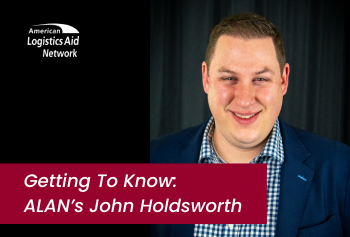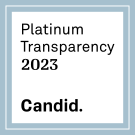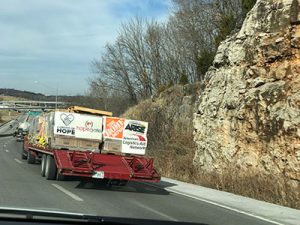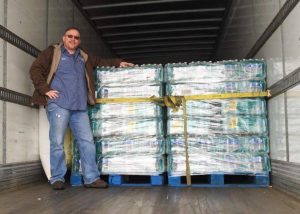Getting To Know: ALAN’s John Holdsworth
When a certain Seattle-based emergency management professional started making hot sauce out of his home several years ago, he thought he was merely picking up a new hobby.
Turns out he was also practicing for his next job.
Meet John Holdsworth, our first-ever Resilience Programs Director.
A pivotal part of ALAN’s team since April 2025, he’s helping us research and design the secret sauce that will ultimately enable several communities across the country to recover from disasters more quickly. And rumor has it, he’s already hard at work sourcing some of its first key ingredients.
We recently sat down for this quick chat with him to find out more.
So John, first things first. Tell us how we can get some free samples of your hot sauce. (Oops! We meant to say, tell us how you came to work in disaster resilience.)
I spent the first part of my career working in the legal field focusing on understanding community perspectives to inform outcomes on environmental mitigation issues.
While there, I had a chance to work closely with several local communities to arrive at the best ways to address the issues at hand and meet area residents’ needs, and I really enjoyed that kind of work.
But I also began to wonder if I’d enjoy it even more if I were doing it in the public sector rather than the private one, especially after rubbing elbows with so many emergency management professionals and seeing what they did.
What, exactly, piqued your interest?
The more I learned about their profession, the more I was intrigued – and convinced it was the right path for me.
So I quit my law job and took two part-time paid emergency management internships with the City of Los Angeles and the Port of Long Beach.
As memory serves, you spent the next decade working in various emergency management capacities, including working closely with FEMA on some of the country’s first supply chain resiliency projects.
Yep – including a supply chain resilience project in the Los Angeles that introduced me to Kathy Fulton, who was consulting on that same initiative in her ALAN capacity. Over the course of that project and subsequent ones we collaborated on in the Pacific Northwest over the next few years, I came to have a lot of respect for ALAN and the work that it was doing.
And that eventually led you to this job at ALAN. Welcome aboard!
Thanks. I’m super happy to be here – and really excited about the chance to approach disaster recovery in a way that’s less reactive and more preparation-centric. I’m also relieved that no one on the team has given me too much of a hard time about being the first “boy” to work here in several years.
Well, we did think about putting a frog in your bed. But you live too far away. Anyway, give us the lowdown on what you’re going to be doing.
In the long run, I’ll be spearheading ALAN’s efforts to improve community capacity building for disaster response by improving several communities’ logistics capabilities. Among other things I’ll be creating tailored training sessions and exercises to help build their capacity while creating more cross-sector local coalitions to help communities activate for and respond to disasters more effectively.
Sounds like an “easy” enough task.
I know, right? And after that, I’ll work on finding a cure for the common cold.
Seriously though, I’m loving the challenge, because it’s such a unique problem set. This is work that has needed to be done by an organization like ALAN for so long – and when it’s in place it will make a hugely positive difference in the disaster ecosystem.
What’s a typical day like for you so far?
Right now I’m knee-deep in the research phase for each of this initiative’s three target communities, which means you’ll usually find me perusing key source documents like Georgia’s 700-page freight plan as well as looking at things like what kinds of warehousing space is available (and who operates it), where the truck routes are, what the port capacity is, and which nonprofits are there. I could go on. But you probably get the idea.
Next I’ll be setting up meetings with key partners in the area to find out which of these resources they’ve used during past disasters – and how – as well as what worked and what didn’t.
What’s the end game of all of this research?
Our goal is to create a data map that will reveal each area’s total disaster supply chain capacity and gaps. We’ll then use that map to help determine what kinds of supply chain tools, trainings and programs are needed to address those gaps – and move forward on developing them.
Have you come across any surprises?
I wouldn’t call them surprises per se. However I will say there have been many interesting discoveries – and that we expected there to be, because no one has ever taken the time to collect and synthesize these target communities’ supply chain and emergency management data this extensively before.
We’ll be ready to share more details in a few months, so I hope you’ll consider checking in with me again as this project progresses.
We absolutely will. Meanwhile would you like to share a few more fun facts about yourself before we close?
Absolutely. I’m a huge reader and especially enjoy non-fiction books. My wife and I are avid hikers and campers, which is why we especially love living near the Pacific Northwest Coast. And we’re the proud owners of a wonderful rescue dog.
On that note, allow us to say that it’s been doggone interesting talking with you. Any parting words?
Thanks. I’m really happy to be part of the ALAN family.
And we’re happy to have you. By the way, do family members get free hot sauce?
Nice try. But no.





